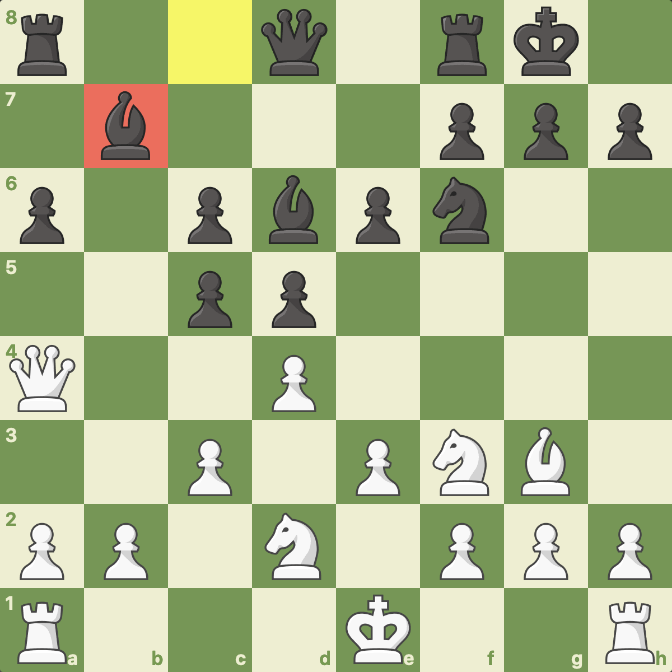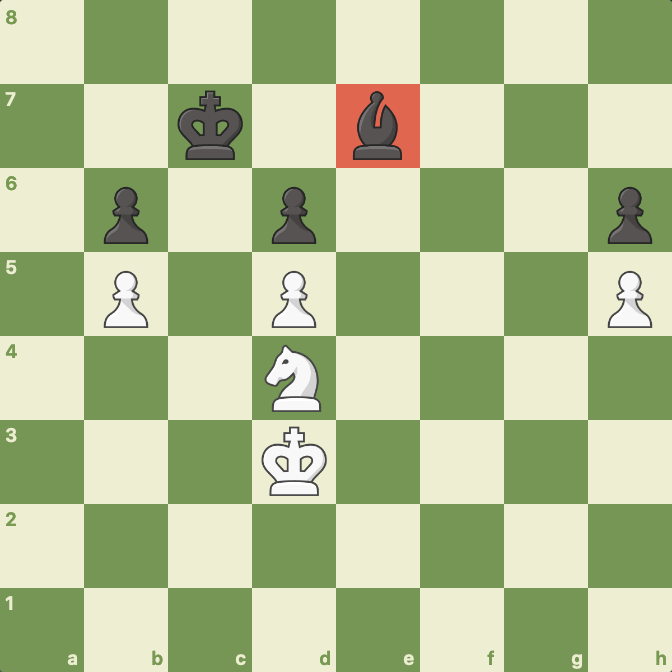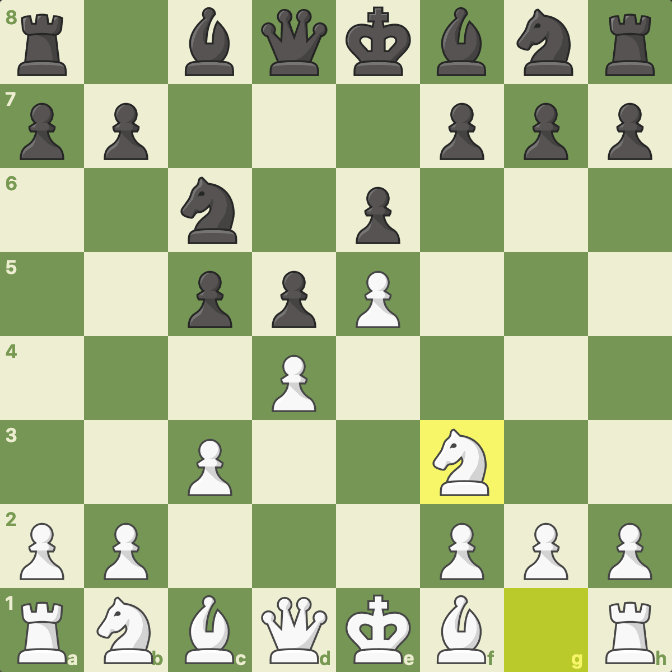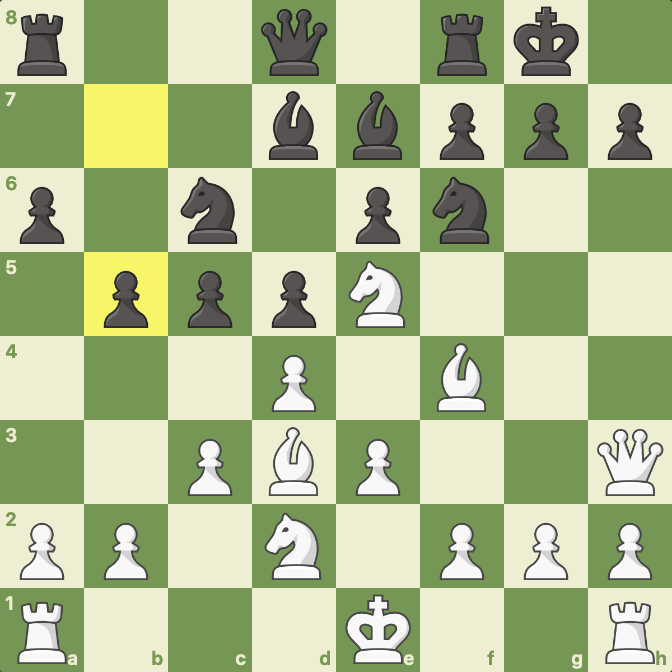
Bad Bishop
Most chess players have heard the terms "bad bishop" and "good bishop," but what is the difference? How do you determine if a bishop is bad? Let's find out!
Here is what you need to know about bad bishops:
What Is A Bad Bishop?
A bad bishop is a bishop that is blocked by its own pawns, making its scope and the number of squares it controls very low. In general, it is not easy (or sometimes even possible) to improve a bad bishop. Let's take a look at an example.
The following position arises from the London System after 1.d4 d5 2.Bf4 e6 3.e3 Nf6 4.Nd2 c5 5.c3 Nc6 6.Ngf3 Bd6 7.Bg3 0-0 7.Bb5 a6 9.Bxc6 bxc6 10.Qa4 Bb7. Black's light-squared bishop on the b7-square is considered a bad bishop:

Why is Black's bishop on b7 bad? It is impeded by friendly pawns and cannot be freed easily—this bishop is basically a "tall pawn" (another name for a bad bishop). If we take the same exact position but place the bishop on b7 on a different square, its value changes drastically. Here is the same position as before but with the bishop magically moved to the f5-square:

The bishop on f5 is a good bishop as it controls important central squares (e.g., the e4-square), has a good scope on the b1-h7 diagonal, and is not impeded by its own pawns. There is a relationship between the pawn structure and the strength of a bishop: if most of your pawns are on light squares, then the light-squared bishop can be restricted (the same is true for dark-squared bishops and pawns on dark squares).
If you have just one bishop, you should try to place your pawns on the squares of the opposite color of your bishop. If you do this, then you can control squares of both colors, and your bishop can move more freely.
Why Are Bad Bishops Important?
The ability to recognize bad bishops is very important. If you have this ability, then you can try to avoid having bad bishops in the first place—if you don't have a bad bishop, then you don't have to worry about trying to improve it. If your opponent is unaware of the disadvantages a bad bishop causes, then it may be easier to stick them with one. GM Yuri Razuvaev once said, "Only a good bishop can be sacrificed; a bad bishop can only be lost."
Only a good bishop can be sacrificed; a bad bishop can only be lost.
— GM Razuvaev
It is important to be aware of an opponent's bad pieces during a game, as you can often take advantage of them. Sometimes this can be achieved by simply not exchanging an opponent's bad piece so that they are stuck with it. A common type of endgame that strong players aim for is a strong knight versus a bad bishop endgame like in the following position:

As you can see, Black's bishop is not too happy. White has a simple winning plan of walking the king to g6 and then winning the h6-pawn with Nf5. You can learn more about this specific endgame in this lesson.
Test
Now that you know what bad bishop are and why they are important, let's see if you can recognize them! In the following position from the French Defense: Advance Variation, is there a bad bishop? If so, which square is it on?

Yes! Black's light-squared bishop on c8 is bad, as it is hemmed in by Black's pawns. The French Defense is known for being solid but also for having a bad bishop. Let's try another one. In the following position, each side has a bad bishop. Which bishop is bad for each side?

This one is more difficult, but White has a bad light-squared bishop on e2, and Black has a bad dark-squared bishop on e7. These bishops are bad because they are stuck behind their respective pawn structures. Note that Black's central pawns are all on dark squares (restricting their dark-squared bishop), and White's central pawns are all on light-squares (restricting their light-squared bishop).

OK, let's try one more! This one is a three-part question:
- Is there a bad bishop?
- If there is, where is it currently placed?
- What is the best bishop on the board?

Alright, the first part shouldn't be too difficult to figure out: Black has a bad bishop on d7. This bishop has little scope and is blocked by its own pawns. The rest of the bishops are all pretty good, but White's light-squared bishop on d3 is the strongest bishop on the board.
White's light-squared bishop controls the central e4-square, attacks the black kingside (e.g., h7), and even has some scope on the queenside. It is also worth mentioning that White's central pawns on the dark squares (d4 and e3) do not restrict the light-squared bishop on d3 at all.
Conclusion
You now know what a bad bishop is, why bad bishops are important, and how to recognize bad bishops. Check out this video lesson for more information on good versus bad pieces!







